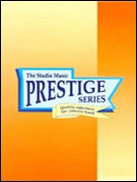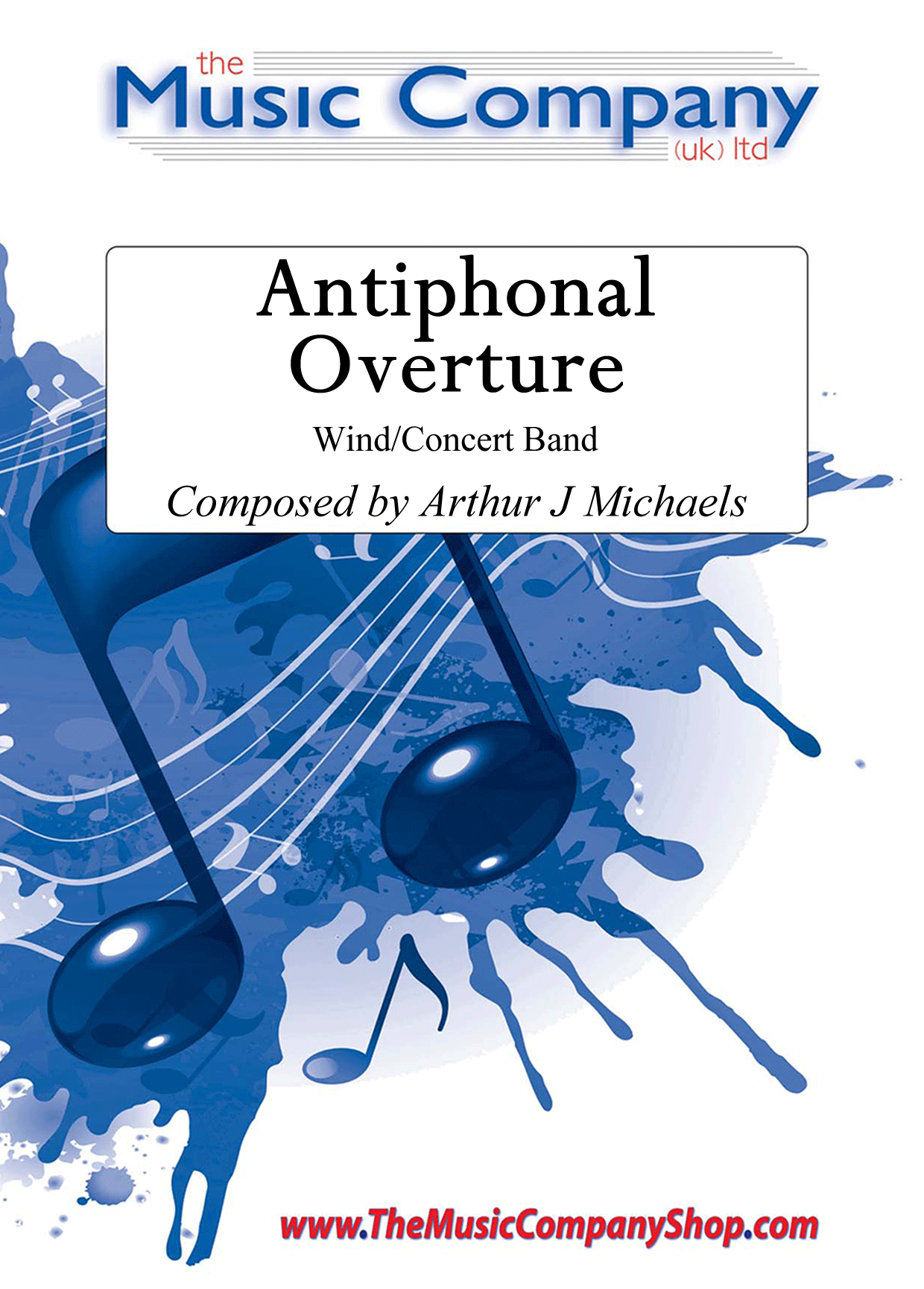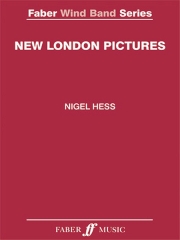Results
-
 £154.99
£154.99Piccola Suite Italiana (Concert Band - Score and Parts)
With this new suite for concert band Franco Cesarini draws on the rich repertoire of folk songs from the Friuli Venezia Giulia region of northern Italy. Between the 16th and 17th Century this rural region developed the 'furlana', a brilliant dance in 6/8 time. This catchy dance soon spread throughout Europe and became more cultivated. Fran?ois Couperin (1668-1733), Georg Philipp Telemann (1681-1767) and Johann Sebastian Bach (1685-1750) all composer of the 18th century composed 'furlane' and in the 20th Century Maurice Ravel used a 'furlana' dance his Tombeau de Couperin. Franco Cesarini follows this great tradition by using the 'furlana' as the basis for this major new concert work. 08:49
Estimated dispatch 7-14 working days
-
 £144.99
£144.99Ross Roy (Concert Band - Score and Parts) - De Haan, Jacob
Jacob de Haan was commissioned to compose this concert piece by the "St. Peters Wind Symphony" from Brisbane, Australia. "Ross Roy" is the monumental late 19th century villa where St. Peters Lutheran College was founded in 1945. The villa has always remained the school symbol. In this composition, Jacob de Haan sees the "Ross Roy" as a metaphor for the years spent at school (a monument in time), where one's personality is formed. So, the opening theme the artist calls the Ross Roy theme initially has monumental characteristics.The rhythmic motion, which strides along in the lower register and percussion at the beginning of the next section is typical of "Tempo di Marcia". This movement, accompanied by repetitions of sound, is a metaphor for the structure and discipline in school. This is the introduction to a march theme, symbolic of "passing through" the classes up to the final examinations.Then, the Ross Roy theme is dealt with again, now in a playful, humorous variation. As if the composer is saying there should also be time for a smile in school. The same theme can be heard in major key and a slower tempo in the following section, expressing pride and self-confidence. This is also the introduction to the expressive middle section that represents love, friendship and understanding.We then return to the march theme in a slightly altered construction. The oriental sounds, constituting the modulation to the final theme, are symbols of the diversity of cultures in the school. The characteristic final theme first sounds solemn, but turns into a festive apotheosis. It is no coincidence that the final cadence is reminiscent of the close to a traditional overture, for the school years can be considered the "overture" to the rest of one's life. The premiere of "Ross Roy" was conducted by Jacob de Haan in Brisbane, on August 22, 1997.Duration: 9:20
Estimated dispatch 7-14 working days
-
 £124.95
£124.95SWORD AND THE CROWN, The (Prestige Concert Band - Score and Parts) - Gregson, Edward
In 1988 I was commissioned by the Royal Shakespeare Company to write the music for The Plantagenets trilogy, directed by Adrian Noble in Stratford-upon-Avon. These plays take us from the death of Henry V to the death of Richard III. Later, in 1991, I wrote the music for Henry IV parts 1 and 2, again in Stratford. All of these plays are concerned with the struggle for power (the crown) through the use of force (the sword) and they portray one of the most turbulent periods in the history of the British monarchy.This work quickly became established in the mainstream repertoire and has received performances worldwide as well as five commercial recordings and many broadcasts. In 2002 I was approached by the Parc and Dare Band regarding their summer festival and commissioned to do a version for brass band. This was given its first performance in Treorchy Hall by the combined bands of Black Dyke and Parc and Dare conducted by Nicholas Childs.When the Royal Air Force Music Services commissioned me to write a work especially for their British tour in 1991 I immediately thought of turning to this music and transforming some of it into a three-movement suite for symphonic band.The first movement opens with a brief fanfare for two antiphonal trumpets (off-stage), but this only acts as a preface to a Requiem aeternam (the death of Henry V) before changing mood to the English army on the march to France; this subsides into a French victory march, but the English army music returns in counterpoint. Finally, a brief reminder of the Requiem music leads to the triumphal music for Richard Plantagenet, Duke of York, father of Edward IV and Richard III (the opening fanfare transformed).The second movement takes music from the Welsh Court in Henry IV (part 1) which is tranquil in mood; distant fanfares foreboding battles to come are heard, but the folktune is heard three times in different variations and the movement ends as it began with alto flute and gentle percussion.The final movement starts with two sets of antiphonally placed timpani, drums and tam-tam, portraying the 'war machine' and savagery of battle. Trumpet fanfares and horn calls herald an heroic battle theme which, by the end of the movement, transforms itself into a triumphant hymn for Henry IV's defeat of the rebellious forces.- Edward GregsonPerformance time 13'54"Recorded on QPRM117D FESTIVAL OF MUSIC 1991, Massed Bands of the Royal Air ForceRecorded on QPRM120D THE SWORD AND THE CROWN, Central Band of the Royal Air Force'Finale' recorded on QPRM142D FESTIVAL OF MUSIC 2002, Massed Bands of the Royal Air Force)
Estimated dispatch 7-14 working days
-
£59.95
Where Eagles Sing - Paul Lovatt-Cooper
The inspiration for this piece came when the composer visited Florida and the Bird Sanctuary in Walt Disney World's Animal Kingdom. He was in the audience to see the rare bird's show where he witnessed some fabulous looking and endangered birds that were trained to perform different tricks that wowed the audience. The highlight for him was the conclusion of the show where the most awesome sight greeted us as an American Bald Eagle soared over the audience. That particular breed of Eagle has been a very rare bird of late. With so few in numbers, it nearly became a member of the sad group of animals that are extinct.The host of the show took great delight in informing the audience that the fantastic creature is now officially safe and no longer classed as endangered. This made a great impact on the composer as the Eagle is an amazing bird, huge in size and power and yet so graceful in flight. This piece is everything associated with the Eagle; bold, powerful and graceful and now free to soar and sing in the American homelands.Where Eagles Sing has been hugely successful as a curtain-raiser (or finale) with brass bands around the world and it is hoped that this version for wind band will be just as popular.
Estimated dispatch 7-14 working days
-
 £50.00
£50.00Antiphonal Overture - Arthur J Michaels
Arthur J Michaels has composed this great number for Wind/Concert Band, and has thoughtfully scored it to support varying instrumentation which may be experienced in school settings.Throughout Antiphonal Overture, different groups of similarly pitched woodwinds and brasses, instrument families, and other instrument combinations 'answer' one another in mainly two-bar phrases. This antiphonal style creates varying timbres and textures throughout the piece.Cues in critical places ensure that smaller groups and those with uneven instrumentation can perform this piece successfully.The ever-changing timbres and textures in Antiphonal Overture are sure to make this piece a popular, challenging work for players and a delight for audiences.Level: Grade 3
In stock: Estimated delivery 1-3 days
-
£105.00
New London Pictures (Score & Parts) - Nigel Hess
New London Pictures represents elements of London in the 21st Century. The Millennium Bridge describes the pedestrian's journey across this wonderful new landmark bridge over the Thames, starting at the imposing Tate Modern, crossing the busy river, and onwards to St. Paul's Cathedral with its bells ringing out over the great city. London Eye is an incredibly large ferris wheel situated on the South Bank of the River Thames. This movement depicts a "flight" on this riverside wheel, at the top of which the anoramic view of London is breath-taking and the exapnse of the music is a suitable depiction of the view. As with all modern cities, London is over-crowded with motor vehicles. London is the first major city in Europe to adopt a Congestion Charge, and this piece (with its stop and go traffic lights) is both racy and comical. Here are Londoners attempting to go about their business in the face of overwhelming odds.....
In stock: Estimated delivery 1-3 days
-
 £37.14
£37.14Over London Bridge (Wind Band) English Trad. arr. Andrew E. Lawson
Inspired by early works for wind band by British composers Gustav Holst and Ralph Vaughan Williams, this charming concert work is based on an English folk song called As I walked over London Bridge. The arranger Andrew E Lawson writes: 'While I found this folk melody in a set of cello etudes written by Vaughan Williams, it was text that solidified my decision to use this melody, and it is the text that brings some insight into the nature of this folk melody, as well as the nature of the additional original melodies and harmonies throughout the piece.' To view a rolling score video of the work please visit https://www.youtube.com/watch?v=oFWGJWbvqjM Sheet music available from : UK: www.wind-band-music.co.uk USA: www.cimarronmusic.com Difficulty Level: Medium Advanced Instrumentation: Flute 1-2 Oboe Bassoon Clarinet in Bb 1-3 Bass Clarinet in Bb Alto Saxophone 1-2 Tenor Saxophone Baritone Saxophone Trumpet in Bb 1-3 Horn in F 1-4 Trombone 1-2 Bass Trombone Euphonium Tuba Timpani Percussion 1-3
In stock: Estimated dispatch 1-3 days
-
 £49.00
£49.00The Gift To Be Simple
This traditional Shaker song is presented with modern harmonies, rhythms, and instrumentation. Using ostinato patterns, long legato lines, and interesting percussion parts, this arrangement offers many interdisciplinary possibilities as well. Folk songs have long been an essential part of the concert band repertoire and this modern approach to a well-known melody can help teach this important style to performers in a new way.
Estimated dispatch 12-14 working days
-
 £44.00
£44.00Rigaudon
The rigaudon is a French Baroque dance in a lively duple meter. Rhythmically simple with a few syncopated lines, this short composition is the perfect introduction to this style. With varying dynamics, this is an excellent piece for developing a lighter playing style while also focusing on listening, articulations, and musical phrasing with repeats. Playable by as few as one on a part, this also works well for smaller bands with limited instrumentation.
Estimated dispatch 12-14 working days
-
 £44.00
£44.00Honor Bound
Honor Bound is to be obligated by one's own code of conduct to do what is ethically right. This is often referenced in the military, but applies equally to our everyday conduct. This traditional military style march represents the dignity and worth of the individual. This is accomplished by featuring all sections at some point: a percussion introduction and interlude, trumpet fanfare, low brass melody, and woodwind lead. The notated dynamics are essential for musical contrast and the tempo can be adjusted according to student skill levels. Perfect to teach march form, this composition is also suitable for patriotic celebrations or as a last-minute selection for more advanced bands.
Estimated dispatch 12-14 working days

